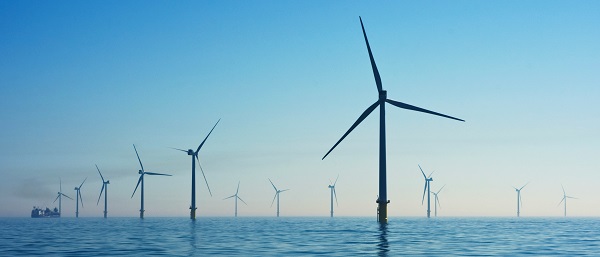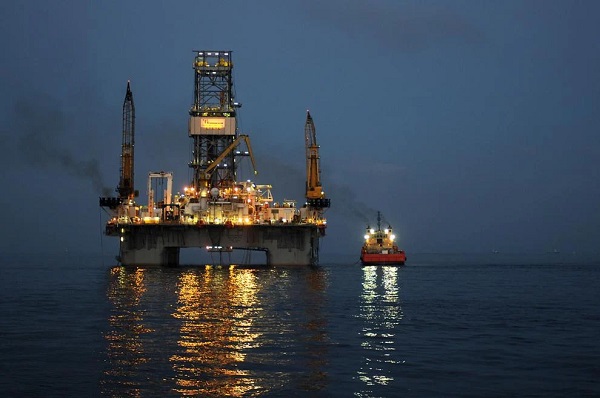Energy
Natural resources remain backbone of Canada’s trade and prosperity

From the Fraser Institute
By Jock Finlayson and Elmira Aliakbari
It’s hard to overstate the importance of energy to our economy. In its latest “scorecard” report, the Coalition for a Better Future notes that “over the past decade, Canada recorded a cumulative trade gap of $130 billion. Had it not been for energy, our trade gap would have been about $1 trillion.” By any measure, the energy sector punches above its weight when paying Canada’s bills.
Canada is a mid-sized economy accounting for roughly 2 per cent of global production. Within North America, we represent less than one-tenth of the collective output of the three national economies. Canada is also an “open” economy that relies on cross-border flows of trade, investment and knowledge to sustain our high living standards.
To pay our way in an unforgiving and very competitive world, Canada must produce and sell exports to customers in other markets. Among other benefits, these exports furnish the financial means to pay for the vast array of imports that enhance the wellbeing of Canadian households and allow many of our businesses to operate efficiently and grow.
In 2022, Canada exported $779 billion of goods to other countries, and $161 billion of services, for a total of $940 billion. About three-quarters of Canada’s exports are destined for a single market—the United States. Canada also sources the bulk of imports from the U.S.
A hard truth about Canada’s trade is the outsized role of natural resource-based products in the export mix. Added together, energy, non-metallic minerals (and related products), metal ores, forest products and agri-food (i.e. food produced from agriculture) comprise roughly half of Canada’s international exports of goods and services—a notably larger share than in other countries with advanced economies (apart from Australia and New Zealand).
Energy alone accounted for 27 per cent of Canada’s merchandise exports in 2022, generating $212 billion for Canadian businesses, workers and governments. Mining contributed $85 billion in export revenues, followed by forest products ($60 billion) and agri-food ($57 billion).
Within the broad energy basket, oil and oil-based products dominate, accounting for more than three-quarters of all energy-based export revenues. Despite innumerable speeches and press releases issued by the federal government, energy’s contribution to Canada’s exports is poised to increase in the next few years—due not to growing exports of “clean tech” goods, carbon-free electricity or hydrogen, but to pending liquefied natural gas (LNG) production in British Columbia coupled with rising volumes of Western Canadian oil shipments following the completion of pipeline expansion projects.
It’s hard to overstate the importance of energy to our economy. In its latest “scorecard” report, the Coalition for a Better Future notes that “over the past decade, Canada recorded a cumulative trade gap of $130 billion. Had it not been for energy, our trade gap would have been about $1 trillion.” By any measure, the energy sector punches above its weight when paying Canada’s bills. The same is true, albeit to a lesser extent, for the other major resource sectors.
Many Canadians, huddled in increasingly unaffordable urban communities that have few evident connections to the country’s natural resource economy, may be puzzled by the continued vital importance of resource extraction and processing to Canada’s prosperity.
Ultimately, any trading country has a ledger showing the trade surpluses and trade deficits of its industry sectors. In Canada’s case, a handful of sectors generate significant trade surpluses, which help finance the large trade deficits incurred in other parts of the economy.
The story is a simple one—positive trade balances in the energy, mining, forestry and agri-food sectors offset chronic—and in some cases fast-growing—trade deficits in consumer goods, chemicals and plastics, motor vehicles/parts, and industrial and electronic goods. Canada also runs a smallish deficit in our overall services trade.
The sectoral trade data are informative. Among other things, they tell us where Canada has a “comparative advantage” in the global context. For a market economy, a pattern of positive trade balances is evidence that it has a comparative advantage in industries that reliably report trade surpluses.
Armed with such information, smart policymakers should create and sustain a business and investment climate that champions and bolsters the commercial success of industries that underpin the export economy. This is a message the Trudeau government has had trouble digesting, perhaps because it relies heavily on the votes of a few large metropolitan areas while most rural and resource-dependent regions remain a political afterthought.
Authors:
Daily Caller
US Halts Construction of Five Offshore Wind Projects Due To National Security


From the Daily Caller News Foundation
Interior Secretary Doug Burgum leveled the Trump administration’s latest broadside at the struggling U.S. offshore wind industry on Monday, ordering an immediate suspension of activities at the five big wind projects currently in development.
“Today we’re sending notifications to the five large offshore wind projects that are under construction that their leases will be suspended due to national security concerns,” Burgum told Fox Business host Maria Bartiromo. “During this time of suspension, we’ll work with the companies to try to find a mitigation. But we completed the work that President Trump has asked us to do. The Department of War has come back conclusively that the issues related to these large offshore wind programs have created radar interference that creates a genuine risk for the U.S.”
Predictably, reaction to Burgum’s order was immediate, with opponents of offshore wind praising the move, and industry supporters slamming it. In Semafor’s energy-related newsletter on Tuesday, energy and climate editor Tim McDowell quotes an unnamed ex-Energy Department official as claiming, “the Pentagon and intelligence services, which are normally sensitive to even extremely low-probability risks, never flagged this as a concern previously.” (RELATED: Trump Admin Orders Offshore Wind Farm Pauses Over ‘National Security Risks’)
Yet, a simple 30-second Google search finds a wealth of articles going back to as early as October 2014 discussing ways to mitigate the long-ago identified issue of interference with air defense radars by these enormous windmills, some of which are taller than the Eiffel Tower. It is a simple fact that the issue was repeatedly raised during the Biden Administration’s mad rush to speed these giant windmill operations into the construction phase by cutting corners in the permitting process.
In May, 2024, the Bureau of Ocean Energy Management’s (BOEM) own analysis related to the Atlantic Shores South project contains a detailed discussion of the potential impacts and suggests multiple ways to mitigate for them. An Oct. 29, 2024 memo of understanding between BOEM and the Biden Department of Defense calls for increased collaboration between the two departments as a response to concerns from members of Congress and others related to these very long-known potential impacts.
The Georgia Tech Research Institute published a study dated June 6, 2022 detailing “Radar Impacts, Potential Mitigation, from Offshore Wind Turbines.” That study was in fact commissioned by the National Academies of Sciences, Engineering, and Medicine (NASEM), a private non-profit that functions as an advisory group to the federal government.
Oh.
A report published in February 2024 by International Defense Security & Technology, Inc. describes the known issues thusly:
“Wind turbines can create clutter on radar screens in a number of ways. First, the metal towers and blades of wind turbines can reflect radar signals. This can create false returns on radar screens, which can make it difficult to detect and track real targets.
“Second, the rotating blades of wind turbines can create a Doppler effect on radar signals. This can cause real targets to appear to be moving at different speeds than they actually are. This can also make it difficult to track real targets.”
The simple Google search I conducted returns hundreds of articles dating all the way back to 2006 related to this long-known yet unresolved issue that could present a very real threat to national security. The fact that the Biden administration, in its religious zeal to speed these enormous offshore industrial projects into the construction phase, chose to downplay and ignore this threat in no way obligates his successor in office to commit the same dereliction of duty.
Some wind proponents are cynically raising concerns that a future Democratic administration could use this example as justification for cancelling oil and gas projects. It’s as if they’ve all forgotten about the previous four years of the Autopen presidency, which featured Joe Biden’s Day 1 order cancelling the 80% completed Keystone XL pipeline, a year-long moratorium on LNG export permitting, an attempt to set aside more than 200 million acres of the U.S. offshore from future leasing, and too many other destructive moves to detail here.
Again, a simple web search reveals that experts all over the world believe this is a real problem. If so, it needs to be addressed as a matter of national security. Burgum is intent on doing that. All half-baked talking points aside, this really isn’t complicated.
David Blackmon is an energy writer and consultant based in Texas. He spent 40 years in the oil and gas business, where he specialized in public policy and communications.
Energy
While Western Nations Cling to Energy Transition, Pragmatic Nations Produce Energy and Wealth


From the Daily Caller News Foundation
History will likely remember 2025 as the year energy corporatists finally stopped pretending there is a climate crisis. For a decade, a bizarre theater of the absurd played out as titans of the oil and gas industry apologized for their core business while pledging allegiance to a “green transition” that existed mostly in the imaginations of Western bureaucrats. But the curtain has seemingly fallen.
ExxonMobil, one of the world’s largest energy producers, has slashed $10 billion from its low-carbon investment commitments through 2030. Simultaneously, the company announced that it expects $25 billion in earnings growth from 2024 to 2030 to be powered primarily by increases in oil and gas production, which will push daily output to 5.5 million barrels of oil equivalent by the end of the decade.
This is not a company abandoning climate responsibility but rather at last recognizing what has long been obvious: The path prescribed by the climate industrial complex is economically destructive and operationally impossible – even with massive government subsidies.
Dear Readers:
As a nonprofit, we are dependent on the generosity of our readers.
Please consider making a small donation of any amount here.
Thank you!
For years, the global energy strategy has been surreal. Companies that built the modern world on the back of energy-dense hydrocarbons indulged those celebrating the arrival of wind turbines and solar panels to power civilization. But reality, stubborn and unforgiving, has interrupted the psychedelic revelry.
ExxonMobil’s low-carbon investments will be paced to policy support and customer demand, says the company. That is corporate speak meaning that spending on green projects is paused unless the government – using our tax dollars – subsidizes the risk or until a market exists.
Megaprojects, once heralded as the future, are now in line for deferral. Why? Because without taxpayer handouts, the economics of trying to bury underground a plant food like carbon dioxide simply do not work – and defy common sense.
The energy sector is pivoting from a strategy of “grow clean at all costs” to “returns first, transition last.” “Green” projects are being relegated to a secondary capital bucket – a token for good PR instead of a core activity.
Europe’s Shell and Aker BP and Canada’s Enbridge have withdrawn from the Science Based Targets initiative to establish “science-based emissions reductions.” This was a retreat from what is described as a “credible, science-based net-zero framework” because there was neither credibility nor science. It was a political suicide pact. The energy giants looked at the cliff’s edge and refused to jump.
British multinational BP, having abandoned its promise to go “Beyond Petroleum,” has raised its oil and gas spending and softened its renewable targets.
ENEOS Holdings, a Japanese refiner, has discarded hydrogen production targets, with CEO Tomohide Miyata explaining that “the shift toward a carbon-neutral society appears to be slowing.”
These U-turns represent a renaissance in policy realism. Energy needs do not disappear because politicians make speeches at climate summits or corporations allocate funds to ESG programs or governments attempt to control consumption and choices of appliances and automobiles.
Second thoughts about an inevitably doomed “green” transition is a victory for the single mother in the U.S. trying to budget for winter heating and for the small business owner in the U.K. whose margins are crushed by one of the highest commercial electricity rates in the world. And for the billions of people in developing nations, this pivot could be salvation from generational poverty.
The question now is whether governments will recognize what corporations have made clear: that the energy transition was a fantasy infused with scientific language and draped in moralistic gingerbread. Or will they continue to increase subsidies and regulations?
Very likely, there will be a bifurcation: on the one hand, western bureaucracies, particularly in Europe, continuing an economic decline under mandates and taxes, and on the other, pragmatic governments, many of them in Asia, pursuing prosperity with fuels and technologies that work.
Vijay Jayaraj is a Science and Research Associate at the CO2 Coalition, Fairfax, Va. He holds an M.S. in environmental sciences from the University of East Anglia and a postgraduate degree in energy management from Robert Gordon University, both in the U.K., and a bachelor’s in engineering from Anna University, India. He served as a research associate with the Changing Oceans Research Unit at University of British Columbia, Canada.
-

 Alberta2 days ago
Alberta2 days agoOttawa-Alberta agreement may produce oligopoly in the oilsands
-

 Energy2 days ago
Energy2 days agoWestern Canada’s supply chain for Santa Claus
-

 Energy2 days ago
Energy2 days agoThe Top News Stories That Shaped Canadian Energy in 2025 and Will Continue to Shape Canadian Energy in 2026
-

 International2 days ago
International2 days ago$2.6 million raised for man who wrestled shotgun from Bondi Beach terrorist
-

 armed forces23 hours ago
armed forces23 hours agoRemembering Afghanistan and the sacrifices of our military families
-

 Frontier Centre for Public Policy23 hours ago
Frontier Centre for Public Policy23 hours agoTent Cities Were Rare Five Years Ago. Now They’re Everywhere
-

 Opinion24 hours ago
Opinion24 hours agoPope Leo XIV’s Christmas night homily
-

 Fraser Institute23 hours ago
Fraser Institute23 hours agoHow to talk about housing at the holiday dinner table











